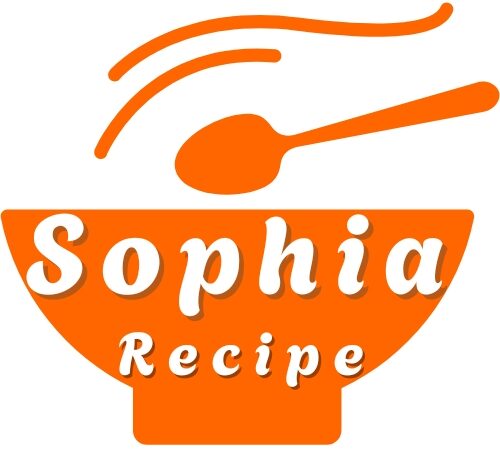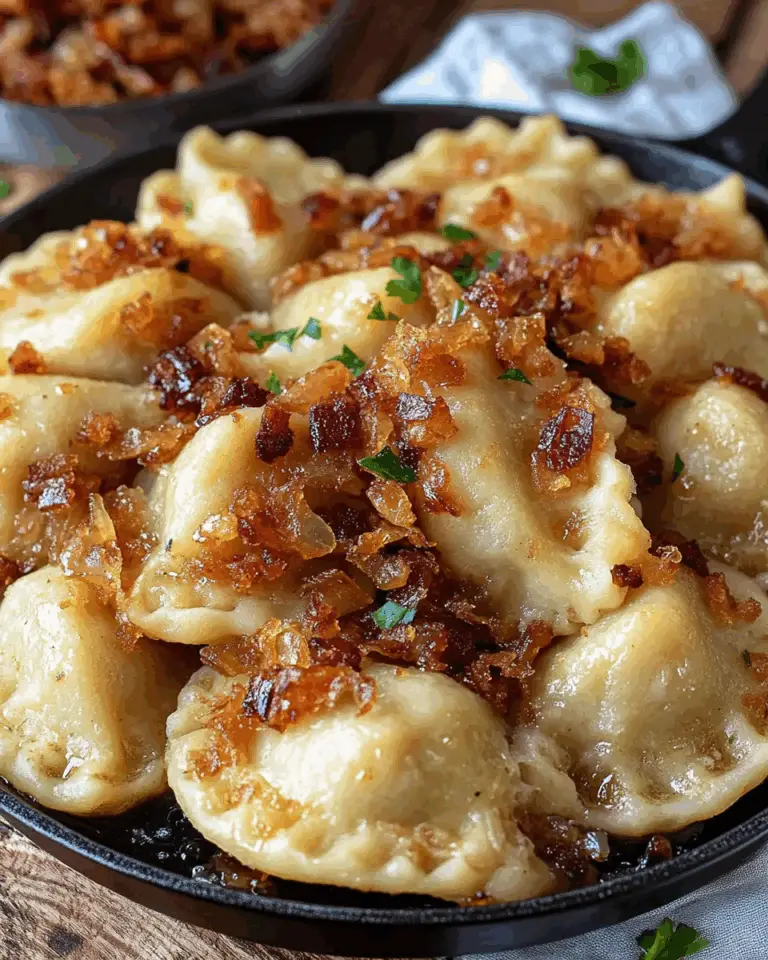A Savory Filling That Balances Creaminess and Tang
This particular recipe highlights a classic savory filling that perfectly balances creamy mashed potatoes with tangy sauerkraut. Mashed potatoes bring a comforting softness and subtle richness, while the sauerkraut adds a sharp, fermented tang that cuts through the heaviness of the potatoes. This contrast creates a complex flavor profile that is both hearty and refreshing.
The optional addition of grated white cheddar cheese introduces a mild sharpness and creamy meltiness, further enhancing the filling’s depth. Fresh parsley adds a touch of brightness and color, preventing the filling from feeling too heavy. Seasoned with salt and a blend of black and white pepper, the filling is well-rounded and satisfying.
The Art of Making Pierogi Dough
The dough for pierogi is deceptively simple, yet mastering it is key to the perfect pierogi. Made primarily from flour, water, egg, and olive oil, this dough must be kneaded until smooth and elastic but remain soft enough to roll thin without tearing. The egg enriches the dough slightly, improving both texture and flavor, while olive oil adds a subtle richness and makes the dough easier to work with.
Allowing the dough to rest before rolling is an essential step. This rest period relaxes the gluten, making the dough more pliable and less likely to shrink during cooking. Rolling the dough to just the right thickness is a balancing act—the dough must be thin enough to cook quickly and remain tender, yet thick enough to hold the filling without breaking.
Filling and Forming the Pierogi
Filling and shaping pierogi is a hands-on process that is both meditative and satisfying. Using a cutter to make uniform circles ensures consistency in size and cooking time. The amount of filling is important: too little and the pierogi lack substance, too much and the dough may tear or burst during cooking.
Sealing the edges tightly is crucial to prevent the filling from leaking out while boiling. Many cooks use a fork to crimp the edges, which not only secures the dough but also creates a decorative border that enhances the presentation. This step requires some practice, but once mastered, it can be quite therapeutic and rewarding.
Boiling and Pan-Frying: The Two-Step Cooking Method
Pierogi are traditionally boiled until they float to the surface, indicating that the dough is cooked through. Boiling gives the dumplings a tender, slightly chewy texture that is essential to authentic pierogi. However, the dish truly comes alive when the boiled pierogi are pan-fried in butter until golden and crispy on both sides.
This final frying step adds a delicious contrast in texture—crispy edges and a soft, pillowy interior. The butter imparts a rich, nutty flavor that complements the filling beautifully. Frying also creates an inviting aroma that fills the kitchen, enhancing anticipation before the first bite.
The Perfect Toppings: Bacon and Caramelized Onions
No savory pierogi dish is complete without toppings, and this recipe’s classic combination of crispy bacon and caramelized onions elevates the dumplings to new heights. The bacon adds smoky, salty crunch, which contrasts with the soft pierogi and tangy filling. Meanwhile, caramelized onions bring a sweet, mellow flavor that balances the savory components.
The interplay between these textures and flavors turns a humble dumpling into a gourmet experience. These toppings also add visual appeal, making the dish look as tempting as it tastes. Some variations might include sour cream, chives, or sautéed mushrooms, but bacon and onions remain a beloved, traditional choice.
Serving Suggestions and Pairings
Pierogi can be served as a main dish or an appetizer, making them versatile for different occasions. They pair beautifully with hearty, rustic sides such as sautéed greens, roasted vegetables, or a simple cucumber salad. For beverages, traditional accompaniments include a cold beer or a glass of crisp white wine, both of which cut through the richness of the dish.
For a more festive meal, pierogi can be included in a larger spread of Eastern European favorites like borscht, kielbasa, and rye bread. Whether at a casual family dinner or a special holiday gathering, pierogi bring warmth and satisfaction to the table.
Nutritional Value and Comfort Food Appeal
With approximately 285 calories per four pierogi, this dish offers a reasonable portion size that fits well into a balanced diet. The combination of potatoes and sauerkraut provides carbohydrates and dietary fiber, while the optional cheese and bacon contribute protein and fat.
Although considered comfort food, pierogi can be enjoyed without guilt when balanced with fresh vegetables or a salad. Their handmade nature allows for customization—one could substitute sauerkraut with mushrooms or spinach for variation, or reduce the amount of cheese and bacon to lighten the dish.
Pierogi as a Culinary Tradition and Experience
Making pierogi from scratch is as much about the process as the result. The ritual of mixing dough, preparing fillings, shaping each dumpling, and cooking them is a way to connect with a rich cultural heritage. It’s often a communal activity where family and friends gather to prepare the meal together, sharing stories and laughter.
The tactile experience of working with dough and filling also creates a deeper appreciation for the food and the tradition behind it. Serving homemade pierogi honors this cultural lineage and brings a piece of Central and Eastern European hospitality into your home.
Conclusion
Pierogi with creamy mashed potato and tangy sauerkraut filling represent a perfect marriage of texture and flavor, deeply rooted in Central and Eastern European culinary tradition. The tender, handmade dough encases a savory filling that balances richness with brightness, enhanced by the contrasting crispy pan-fried exterior. Topped with smoky bacon and sweet caramelized onions, these dumplings offer a comforting and irresistible dish that satisfies cravings for hearty, home-cooked meals.
Whether enjoyed as a main course or appetizer, pierogi are a versatile and beloved comfort food that brings warmth, tradition, and flavor to any table. Preparing and sharing pierogi is an opportunity to experience a centuries-old culinary heritage while creating delicious memories with family and friends. This recipe’s balance of creamy potatoes, tangy sauerkraut, and aromatic toppings makes it a timeless classic worth savoring again and again.






